New evidence 'casts doubts in Isle of Wight fishermen drugs case'
- Published
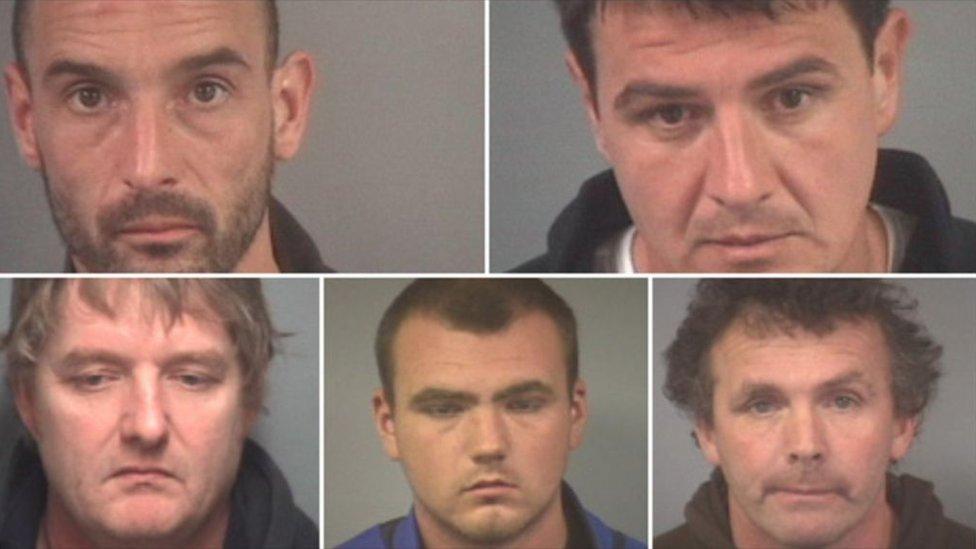
Police mugshots released of the "Freshwater Five" after the trial show, from top-left: Daniel Payne, Zoran Dresic, Jonathan Beere, Scott Birtwistle, Jamie Green
New radar data has emerged in the case of five fishermen, casting doubts over their convictions for trying to smuggle cocaine worth £53m, a charity has said.
The men were jailed in 2011 for up to 24 years each for plotting a smuggling operation on the Isle of Wight.
Now the Centre for Criminal Appeals says radar data shows a "mysterious boat" was seen in the area, which the trial was not told.
A judge must now decide if the case can be sent back to the Court of Appeal.

A detailed forensic search of the Galwad, which has not seen the sea for years, found no trace of cocaine on board it
Jonathan Beere, Daniel Payne, Scott Birtwistle, Zoran Dresic and Jamie Green have always said they were on a "routine fishing trip" at the time police claim the crime took place.
The fishermen were arrested in 2010 after a quarter of a tonne of cocaine was found floating in the sea off the island.
They were then found guilty of conspiracy to import cocaine and given lengthy jail terms. Birtwistle was released last year but the other four men remain in prison.
Lawyers from the miscarriage of justice charity the Centre for Criminal Appeals, external said newly-disclosed radar data collected by UK Border Agency vessel HMC Vigilant shows the men's fishing boat, Galwad-Y-Mor, was never closer than 165m to the spot where it was alleged drugs were dropped off by the container ship MSC Oriane
The Vigilant had been tracking the Oriane at the time as part of an anti-drugs operation in the channel and south of the Isle of Wight.
The data presented at the trial was based on limited AIS fixes for the container ship.
However, the actual radar data gathered, which was never presented in court at the trial, provides more numerous fixes and shows the Oriane did not travel in a straight line and therefore did not cross tracks with the fishing boat, the charity's Emily Bolton said.
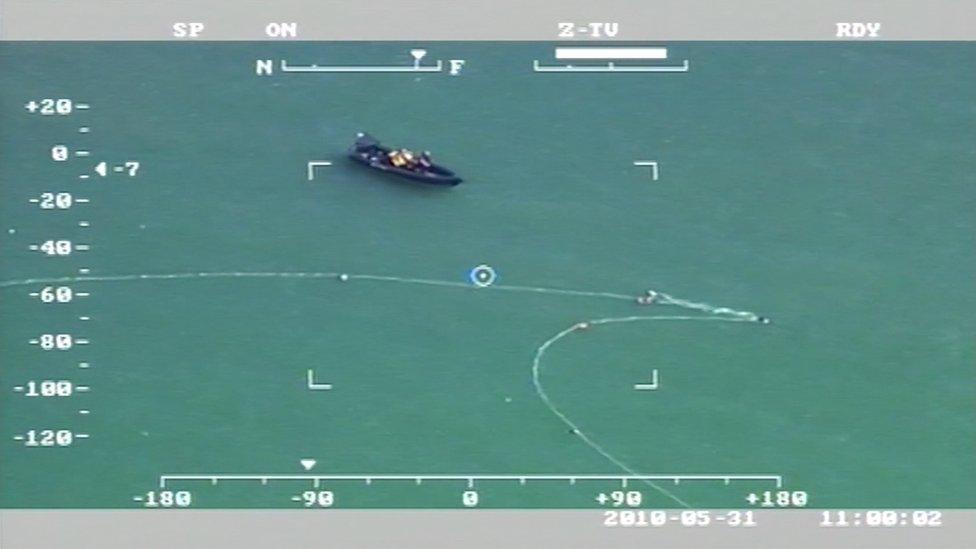
Police helicopter footage shows the white rope connecting the sacks of cocaine which had been dropped by container ship MSC Oriane south of the Isle of Wight
The fresh data also shows that, as soon as the Galway-Y-Mor was back in harbour at Freshwater Bay, a different boat moved at speed to the area where drugs were found.
Ms Bolton said: "This target can be seen travelling three-quarters of a mile in front of the Coastguard cutter. Then this mysterious boat shoots off in a beeline for the location at which the drugs were later found.
"Whether it's the real smugglers panicking and dumping drugs, or a law enforcement vessel that learned that there were no drugs left behind by the fishing boat in Freshwater Bay, it should have been disclosed, as it is exculpatory evidence."
However, in court nothing was mentioned about this boat or the its movements, she added.
"The fresh evidence that we're bringing before the Court of Appeal, we think really cracks the case wide open. It shows exactly what happened, and that is not what the court was led to believe at the trial."
The National Crime Agency said it was not appropriate to comment on the case while legal proceedings were ongoing.
- Published4 June 2018
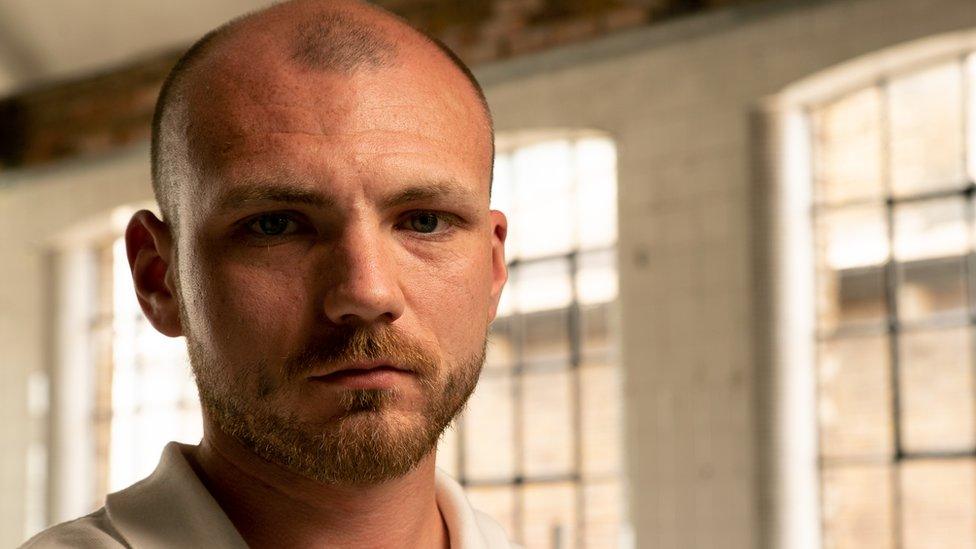
- Published5 December 2017
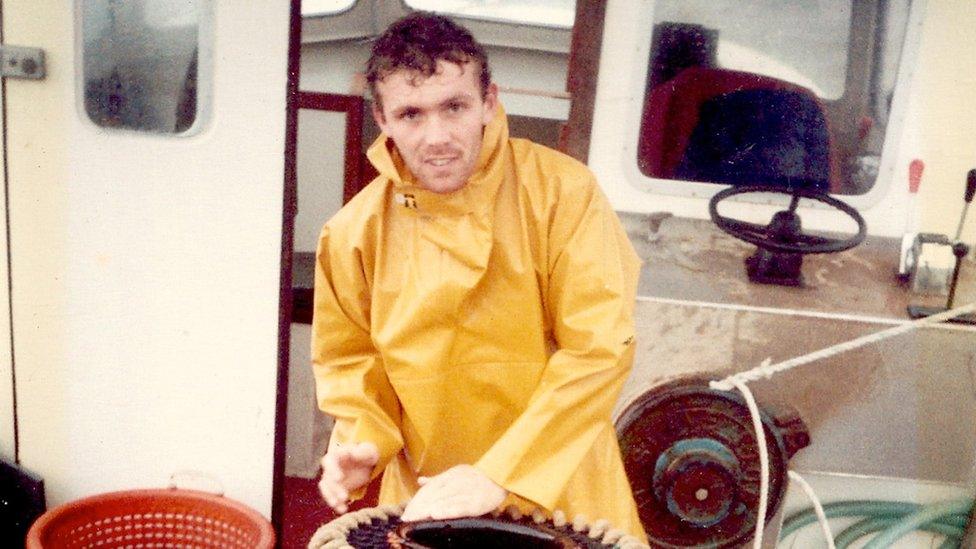
- Published19 July 2016
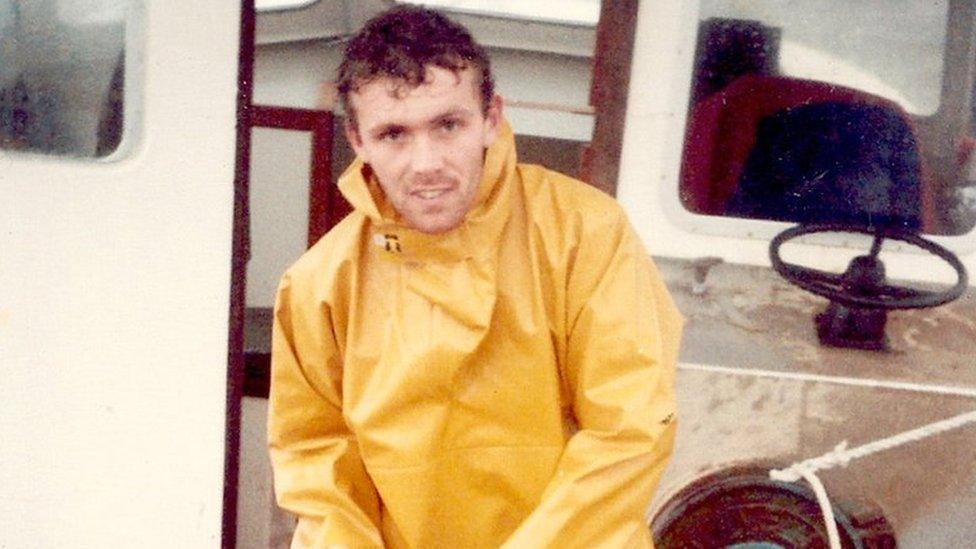
- Published2 June 2011
